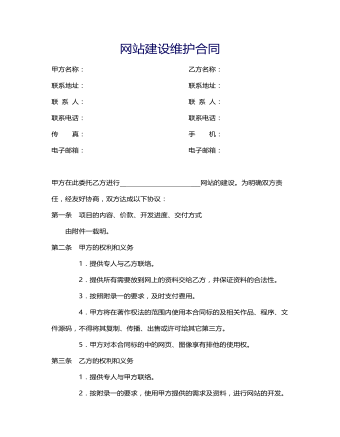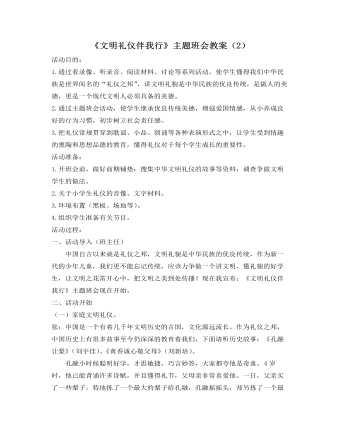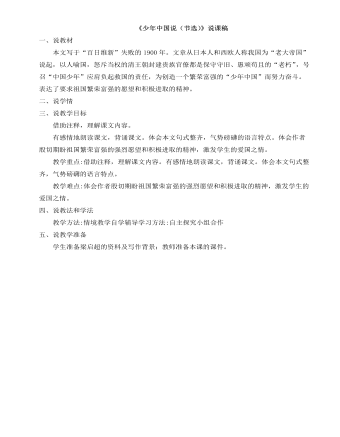-

设备销售合同
如果双方中的任何一方因为不可抗力,如:战争、火灾、台风、洪水、地震或其他双方共计为不属于不可抗力的原因而被迫停止或推迟合同的执行,则合同执行相应延迟,延迟的时间等于不可抗力发生作用的时间。

设备买卖合同
第1条 定义“验收手册”是指由出卖方提供并由双方确认,供双方检验设备是否符合技术规格和规定资料标准所用的一种文件。“规定资料”是指与本系统相关的、执行本协议所必需的图纸、数据和其他资料。“缺陷或瑕疵”是指设备(结构或性能)不符合验收手册有关规定之处。“现场验收”是指买受方按照验收手册对出卖方安装的设备所作的最后验收。“技术规格”是指本协议附表A。第2条 销售主体事项出卖方愿意出售,买受方愿意购买下列设备:设备技术要求设备性能必须符合所规定的性能,达到技术规格和规定数据的标准,并提交全部适用的,必要的图纸、数据和其他技术资料。出卖方应于 年 月 日之前准备且提交给买受方验收手册草案副本2份。由买受方在 日内审议和批准验收手册。本协议正文规定如与附件规定相抵触,以本协议正文规定为准。验收手册若与技术规格或规定资料相悖,则以技术规格和规定资料为准。第3条 价格

设备改造合同
甲方因生产需要,委托乙方对甲方的 (设备)进行改造,依据《中华人民共和国合同法》及其它有关法律、行政法规,遵循平等、自愿、公平和诚实信用的原则,双方就设备改造项目的相关事项达成如下一致。一、改造项目名称。二、改造项目地点。三、改造项目的具体内容(范围)四、改造项目的质量要求(验收标准)1、 乙方保证在改造项目中所更换、补充的零部件为全新产品,能满足国家或行业相关标准所规定的技术参数和指标,并与甲方原设备完全匹配。2、改造项目的具体质量要求(验收标准)详见合同附件《 设备改造合同技术协议》(以下简称技术协议),且设备改造后的技术参数不得低于改造前的相关参数。3、改造项目中所涉及的零部件更换、拆卸、运输、安装、调试等所有与改造项目有关的工作均应由乙方完成;乙方单方确无法独立完成的,应在签订本合同时以书面形式向甲方提出协助请求,可向甲方提出请求,甲方可根据实际情况为乙方提供协助与便利。4、改造项目保修期为 月,自验收合格之日起计算。五、改造项目的工期要求改造项目的工期为 天,自本合同签订之日起计算。六、改造项目的验收乙方应在合同第五条约定的时间内完成合同约定的改造工作并通过甲方组织的验收,验收通过的标志为甲乙双方会签的设备改造符合本合同及技术协议的书面凭证。验收交付成果通过前产生的包装、运输、保险、搬运等全部费用及风险全部由乙方承担。

网站建设合同
甲方委托乙方进行 _网站的建设,本合同书旨在明确甲方委托乙方为其规划构建网站、申请域名、租用服务器空间、制作网页、后期维护等项目,合作期间,双方的权利、义务以及相关的法律事务,为明确双方责任,经友好协商,双方达成以下协议: 一、本合同书内容包括:合同双方的权利与义务网站的验收违约及产权保护服务内容、价格、付款网站维护细则网站开发及交付进度及合同终止本合同书及全部附件经合作双方友好协商达成一致后,签字(盖章)生效二、双方的权利和义务 一)甲方的权利和义务1. 提供专人与乙方联络。 2. 提供所有需要放到网上的资料交给乙方(包括文字、图片以及其他相关文件)的电子文件,并保证资料的合法性。以及以后甲方存放于乙方服务器上的网站内容必须遵守《计算机信息网络国际联网安全保护管理办法》《中华人民共和国计算机信息网络国际联网管理暂行规定》《中华人民共和国计算机信息系统安全保护条例》《中华人民共和国电信条例》《互联网信息服务管理办法》和国家其他有关法律、法规、条例,不得做任何违法活动。甲方对其行为和发布的信息违反上述规定而引起的任何的政治责任,法律责任和给乙方造成的经济损失承担全部责任。

设备租赁合同
承租方:(以下简称乙方) 出租方:(以下简称甲方) 根据《合同法》的有关规定,按照平等互利的原则, 为明确甲、乙双方的权利和义务,经双方协商一致,特签订本合同。第一条:租赁设备的名称: ,所租设备总价值人民币 元(大写 元),设备明细及配置相关情况如下表:序号 名称 规格型号 数量 备注设备使用地点:___________________________。第二条:甲方负责仪器的首次安装及使用培训的相关工作。第三条:租赁期限自______年____月____日起,租赁期限 个月,总租金人民币 元(大写 元),租金按月等额支付,乙方每月支付甲方租金 元。第四条:租赁仪器的所有权1、在租赁期间,合同所列租赁仪器的所有权属于甲方。2、在租赁期间,乙方如对租赁仪器进行改善或者增设他物,必须征得甲方的书面同意。3、在租赁期间,乙方如将租赁设备转租给第三人,必须征得甲方书面同意。4、乙方连续租赁设备时间满 个月并在此期间乙方无任何违约行为,设备所有权以 元(大写 元)的价格转让给乙方,本租赁合同终止。第五条:租金的计算和支付自______年____月____日起,乙方按月支付租金,乙方必须于每月 号前支付甲方次月租金 元。

设备租赁合同
需方(甲方):中天建设集团有限公司供方(乙方): (注:甲方既可以是“中天建设集团有限公司”,也可以是“中天建设集团**建设公司”或“中天建设集团**分公司”,各公司根据自身情况决定。)(注:签约地点在诉讼时就成了法院管辖地,空格上须填写我公司司法资源较好的地点。如不需填写,干脆删掉。)依照《中华人民共和国合同法》、《中华人民共和国建筑法》及其他法律法规,遵循平等、自愿、公平、诚实信用原则,双方就甲方租赁乙方所有的 用于 建设工程 ,经协商一致,订立本合同。一、工程名称二、工程地点三、租赁标的物的名称、品牌、规格型号、数量、日租金:名称 品牌和产地 规格型号 成色 暂定数量 日租金暂定合计金额(人民币): 佰 拾 万 仟 佰 拾 元¥ 注:1、租赁数量以甲方实际租赁使用或甲方指定签收人实收为准。2、上述日租金已包含设备租赁使用期间消耗的燃料费用。四、租赁物的质量标准和技术要求(一)乙方提供的租赁物应当符合以下第 项标准:1、国家规定的标准: 2、 (注:如存在有国家标准、地方标准、行业标准且各标准各不一致时,建议采用较高标准。不同的型号不同规格的设备如果质量标准不一样的,应分别列明。)

《文明礼仪伴我行》主题班会教案(2)
(二)校园文明礼仪张:中国是一个有着几千年文明历史的古国,文化源远流长“礼学”是中国文化的重要组成部分。在中国,自古以来,讲究做人要懂得礼貌谦让,因此中国被称为“文章华国,诗礼传家”,被称为“文明礼仪之邦”。张:中国古代的礼仪规范不断发展改革形成了我们的现代文明礼仪,在校园这个既庄严又活泼、既紧张又文明的环境中,我们少先队员不仅要学好文化知识,还要自觉加强道德修养,讲礼貌,懂礼仪,做一个文明少年。礼仪举止包含了许多内容,你知道那些校园礼仪吗?谁愿意说给大家听?学生自由发言。尹:规范的校园礼仪是怎样的呢?下面请欣赏(岳炀)表演的几种最基本的礼仪形式。表演校园礼仪:正确的走姿、正确的站姿、正确的坐姿、交往礼仪、课堂礼仪、课间礼仪、递物与接物。

2023年主题教育工作总结汇编(2篇)
把学习贯彻有关主题教育系列重要讲话,与学习贯彻对福建、对民政工作的重要讲话重要指示批示精神结合起来,与学习贯彻D的二十大精神结合起来,做到一体学习、一体领会、一体贯彻。四是丰富形式“乐学”。制定局机关青年理论学习计划,开展“青年大学习”行动,结合“中秋、国庆”两节举办“感悟思想伟力、书写青春华章”青年读书分享会,开展形式多样的“三会一课”、主题D日活动,通过寓教于乐,增强学习吸引力和感染力。五是警示教育“促学”。结合全市民政系统突出问题专项治理,开展警示教育,组织全系统D员干部职工开展旁听巡听、观看警示教育片,召开警示教育大会,以案释纪、以案释法,用身边事教育人,坚定不移推进全面从严治D向纵深发展,持续营造风清气正的良好政治生态,扎实推进主题教育走深走实。六是现场交流“活学”。组织D员干部到闽西革命历史博物馆开展现场教学,深入了解革命时期闽西人民在中国共产D领导下所进行的可歌可泣的革命斗争历史,更加深切地感受、朱德等老一辈无产阶级革命家对中国革命事业作出的重大贡献,达到学思想、强D性、重实践、建新功的效果。

科学技术事业发展中心2024年上半年工作总结及下半年工作计划
六、“保护呼伦湖助力美丽呼伦贝尔市”生态文明践行活动为持续做好呼伦湖流域的生态环境保护治理工作。XX组织开展“保护呼伦湖助力美丽呼伦贝尔”生态文明实践行动。此次全旗共有600余名干部职工统一行动,对呼伦湖流域XX境内生产生活垃圾、建筑垃圾及废弃网围栏进行了集中清理,清扫垃圾500余袋,使呼伦湖及周边地区环境得到了明显改善。2024年下半年工作计划1、为农机安全生产打基础,举办农机驾驶员培训班。2、以人为本推进科技兴牧,组织农牧民参加高素质牧民培训班。3、增强基层科技技术力量,组织基层农技人员下乡开展教育培训。4、加强科技知识宣传、培训,发挥好科技特派员服务农牧民作用。5、认真落实农机构置补贴项目资金,规范操作严格管理。6、严格农机牌、证、照管理,杜绝无证驾驶,确保农机安全生产。7、完成上级交办的其他工作。

部编人教版五年级上册《少年中国说(节选)》说课稿
一、说教材本文写于“百日维新”失败的1900年。文章从日本人和西欧人称我国为“老大帝国”说起,以人喻国,怒斥当权的清王朝封建贵族官僚都是保守守旧、愚顽苟且的“老朽”,号召“中国少年”应肩负起救国的责任,为创造一个繁荣富强的“少年中国”而努力奋斗。表达了要求祖国繁荣富强的愿望和积极进取的精神。二、说学情三、说教学目标

人教版新目标初中英语七年级下册How was your weekend教案2篇
Teaching Goal:1. General aims:Talk about recent past events2. Particular aims:A. Language Focus.Talk about recent past events and think of the past events.B. Language goalsHow was….?It was …What did …do over the weekend?C. Language structures:(1). How was your weekend? I was great. Pay attention to no form.(2). What did you do over the weekend? I played soccer. We went to the beach.D. Useful words and phrases:Words: was, did, went, beach, over, project, test, wasn’t, false, number, geography, spend, week, most, mixture, their, had, little, cook, read, saw, change, everyone, sit, sat, no, anythingPhrases: did one’s homework, played soccer, cleaned my room, went to the beach, played tennis, went to the movies, on Saturday morning, over the weekend, cook … for, what about, do some reading, have a party, talk show, go shoppingE. Grammar language:Present simple past tenseRegular and irregular verbsF. Learning strategies:Tour and holidaysG. Interdiscipinary:H. Emotion and manner:Teaching time: 5 periodsTeaching procedures:Period One教学步骤、时间 教师活动 学生活动 媒体应用Step 1Free talk 3’ Ask some questions like:Who’s on duty today?What’s the weather like? Answer and talk about something.让同学们回答下列问题1. Do you like weekend? (Let some students answer)It takes them three minutes to talk about the question.2. Why do you like weekend? (let the students answer) Most of the students like the weekend此时教师用汉语问:“在周末期间问你干了什么?这句话用英语这么回答?Let the students guess.At last the teacher give them right answer3. What did you do over the weekend?(板书、学习)

人教版新目标初中英语七年级下册Where is the post office教案2篇
Period 2 (3a----Section B 2c)Preview(Pre-task): Key points: What laAdd another information about their pen pals----their language on the cardnguage does she/he speak?She/He speaks....Does she/he have any brothers and sisters? Does she/he speak English?Preview(Pre-task): Add another information about their pen pals----their language on the cardKey points: What language does she/he speak?She/He speaks....Does she/he have any brothers and sisters? Does she/he speak English?Step 1 Revision1.Revisionand dictation of the new words 2.Revise the drills they learned yesterday.(by pairwork and grammar exercise)Step 2 Leading-inT has a conversation with one student. The conversation is following:---Do you have a pen pal?---Yes, I do.---What's your pen pal's name? ---His/Her name is....---Where is your pen pal from? ---He/She is from...---Where does he/she live? ---He/She lives in....---What language does he/she speak?He/She speaks...Write the new words on the Bb. They are following: EnglishChineseJapaneseFrenchStep 3 LearnLearn the new words with the whole class.Finish 3a with the students3b Pairwork T still does an example with one student Then the Ss practise in pairs. The example is following:--Curry Muray is my pen pal. He is from the United States.---What language does he speak?

人教版新目标初中英语七年级下册Don’t eat in class教案2篇
Don’t fight. =You can’t fight. (板书,教读)教师把这些句子板书在黑板上,并请学生大声整齐地读祈使句和“can’t”句型,并让学生注意两种句型表达形式的不同和转换,“Don’t …=You can’t…”;并对学生说:These are our school rules. (板书,教读) You can’t break the school rules. Don’t break the school rules.(板书,教读)步骤3 :Practicea. T: Now, each of the students is breaking one of these rules.Please finish 1a.学生看图,完成1a的内容,检查答案并大声朗读校规。b. 听录音,完成1b,选出四位学生都违反了哪条校规;听之前,学生要读会英文名。c. 请两位学生朗读1c部分的句型;要求学生两人一组对话表演,SA扮演外校转来新生,SB告知本校校规。(学生可经过讨论,多说出他们想到的校规,不必只限于书上;教师应给予帮助)2) 第二课时(2a~4)步骤1 :warming up of revisionT: What are the rules at your school?学生使用“can”或祈使句表达各条校规;其中老师可引出“eat in the cafeteria outside”的表达。步骤2 :Practicea.T: Christina is an exchange student. She doesn’t know the rules. Let’s listen, what activities they’re talking about?学生听第一遍时,完成2a;第二遍时,完成2b;b. 请学生领读2c部分,看着2a完成的表格,理解2c活动的要求;分成小组针对2a进行问答;

人教版新目标初中英语七年级下册I want to be an actor教案2篇
三、教学建议第一课时:1. Lead in (Vocabulary)A) Before class, teacher should collect some pictures of working places. For example: Bank, TV Station, Restaurant, Police Station, Hospital ...B) In class, show students the pictures (PowerPoint, OHP). Ask students to tell the name of the working places and the name of the jobs.Shop assistant, doctor, actor, reporter, police office, waiter, bank clerk, studentC) Do exercise 1a and 3a.2. Bingo GameAsk groups of students to make up pairs of cards with a job on one and the related workplace on the other. For example, waiter / restaurant, teacher / school, doctor / hospital. Encourage students to use both the job / workplace combinations in the book and the ones that students came up during class discussions. Be sure they have twice as many sets of cards as there are students in the group. They can make two sets of cards for a single job / workplace, if necessary. Then have each group mix up its set of cards and hand their cards out in random order. Each time a student gets a pair of cards that match, he or she can lay these cards down. The goal is to have no cards in your hand at the end.3. Task OneA) Ask students to work in pairs and ask the partner what does he / she want to be in the future.e. g. :What do you / does he / does she want to be?I want to be a.Why?Because it's (adj).B) Vocabulary: Section B, 1a4. Homework 1.2.

人教版新目标初中英语七年级下册It’s raining教案2篇
1 Each group choose one place to describe and what you are doing in it Choose one place, and describe what they are doing 2 Move around the room and give suggestions Talk about it and write it down 3 Ask one to show their works and act it Choose one of each group to make a report 4 Evaluate the best group and the best reporter Choose the best one Homework Ask your friends their ideal place and write about it教学反思:新课程标准中强调学生在课堂中的主体地位,在综合课中他们的主体地位就更加突出。在各个活动中给不同程度的学生不同层次的任务,让各层面的学生都有表现发挥的机会,从而产生对英语的兴趣。使用照片图片多媒体来辅助教学,效果更好。同时让了解其他国家风景,风俗的同学介绍ideal place,增加学生的背景知知识,实现跨学科交流的目的。教案点评:采用任务型教学模式,在各个活动中给不同程度的学生不同层次的任务,让各层面的学生都有表现发挥的机会,从而产生对英语的兴趣。使用照片图片多媒体来辅助教学,效果更好。让了解其他国家风景,风俗的同学介绍ideal place,增加学生的背景知识,实现跨学科交流的目的。

人教版新目标初中英语七年级下册Why do you like koalas教案2篇
单元整体说明(一)单元教材分析本单元的核心话题是描述动物和表达个人喜好,以及句式why do you like…? Because…。这也是本单元的教学重点。通过本单元的学习,学生应能较流利地运用所学词汇和句型描述动物,表达个人喜好。(二)单元知识结构1.词汇动物名称 tiger, elephant, koala, dolphin, etc.词汇描述性形容词: smart, cute, ugly, clever, shy, etc.国家名: Australia, South Africa2.句型Why do you like koala hears? Because they are cute.Where are pandas from? They're from China.What animals do you like? I like dolphins.(三)单元整体目标1.Master the vocabulary2.Master and use: Why do you like koalas? Because they am cute.Where are pandas from? They're from China.What animals do you like? I like dolphins.(四)单元教学重难点一览(五)单元学情分析学生此前已经学过由why, where, what 引导的特殊疑问句句型,具有了学习本单元知识的认知前提。形形色色的动物能激发学生的好奇心,产生了解它们的欲望,这有利于本单元知识的教学和学生学习兴趣的培养。

人教版新目标初中英语八年级上册How was your school trip教案2篇
“Go for it!” is based on “Task-Based Language Teaching”. It adheres to “The authenticity principle”, “The form-function principle”, “The task dependency principle” and “The principle of learning by doing”. These principles all accord with the demands of curriculum focus.In and of Grade Seven (II), “Go for it!”, students have learned “The Simple Past Tense”. And it appears again in of Grade Eight (I). teaches students more about how to talk about events in the past. In addition, it gives affirmative and negative statements in the past tense, such as the sentence patterns “Did you see …?” “Were there …?” “Did you go …?” As the first part of Unit 8, Section A opens with a picture presenting the last school trip in the aquarium and continues with several step-by-step practice activities, which are all good for students to master “The Simple Past Tense”. Doing well in Section A will help students integrate the new target language with that in Section B. Thus, they can describe the events in the past freely and foster their own ability of reflecting and practicing. II. Teaching ObjectivesTeaching objective is the beginning and aim of teaching activities. According to the overall goal of the English elementary course--- improve students' synthetic ability of language application, which should be based on the development of students’ “Language knowledge”, “Language skills”, “Character building”, “Learning strategies” and “Cross-cultural awareness”. The teaching objectives are described as follows(I). Knowledge objectivesi. Master the simple past tense of regular and irregular verbsii. Recite the new words and expressions about the last school trip in the aquarium, including their pronunciation and intonation

人教版新目标初中英语八年级上册How do you get to school教案2篇
Step Ⅶ Role play ( Work on 1b)1. First ask two students to read the dialogue to the class.Sa: How do you get to school?Sb: Well, I ride my bike to the subway station. Then I take the subway.2. Now work with a partner.Suppose you use two kinds of transportation to get to school \Hangzhou\Beijing... (bus, train, subway, walking, bike, etc.) Tell how you get there. You may use the phrases in 1a.3. Then ask different pairs of students to present their conversations to the class.Step ⅧListening1. Work on 2a(1) First ask students to read the list of information that Thomas wants to know.…where Nina lives.…how far from school she lives.…how long it takes to get to school.…how she gets to school.…what she thinks of the transportation.(2) Tell students what transportation and bus stop mean.bus stop 汽车站 transportation n. 运送;运输Then tell students we'll hear a recording. Please put a checkmark in front of each thing that Thomas wants to know.(3) Now play the recording for students.( Have students pay attention to the sample answer.) (4) Then correct the answers.

人教版新目标初中英语八年级上册What are you doing for vacation教案2篇
Teaching goals : 1. Words & phrases: babysit ,get back , fishing , rent , think about , decide(on) , tourist etc. 2. How to talk about future plans . 3. 现在进行时表示将来计划或行动. 4. 特殊疑问句(where , when , how long引导) Important and difficult points : Drills :What are you doing for vacation ? I’m watching TV . When are you going ? I’m going … . How long are you staying ? We’re staying for five days . Teaching aids : cards and a tape ,a large wall calendar . Period 1 Teaching procedures : Step 1Leading in1. Free talk . 2. Put up the wall calendar . T: I’m staying home on Saturday (pointing to next Saturday ).Ss repeat . Ss: I’m staying home on Saturday . T: OK. Today we’ll learn how to talk about future plans. Step 2Pre-task SB Page 13 , 1a . 1. Look at the picture carefully and tell what you see in the picture . 2. Write the activities from the pictures in the box and add some more . 3. Practice reading . Step 3While-task1. Using the activities we write in 1a to make conversations .For example :What are you doing for vacation ? I’m visiting my uncle . 2. Pairwork .Practice in pairs . 3. 用第三人称练习对话.

人教版新目标初中英语八年级下册What should I do教案2篇
说明:在帮Li Lei提建议的同时,教育学生如何学好英语。第三课时教学目标1. 语言目标:a) 词汇: Original, in style, haircut, the same as.b) 语言结构:My friend wears the same clothes and has the same haircut as I do.2. 能力目标:大多数学生能够谈论自己喜欢哪种服装,提高查找信息的能力。3. 情感目标:学会如何与朋友相处,要有自己对时尚的看法。教学重点掌握一些重要词汇。教学难点学会谈论问题,并能提出书面建议。◆教学突破首先针对Erin的问题,提出个人的建议,模仿2c部分的对话展开双人交际Pair-work;听老师诵读3a部分的信件,并找出LEFT OUT的问题所在;学生完成3b部分的内容,给Left Out提出书面的建议;学以口头形式提出自己目前存在的某个问题,讲给大家听,让同学们给自己提出一个建议,并作笔录;学生两、三个人分成一组,随意性地进行口语交际,谈论P14的第4部分的某个问题,相互交换意见。

